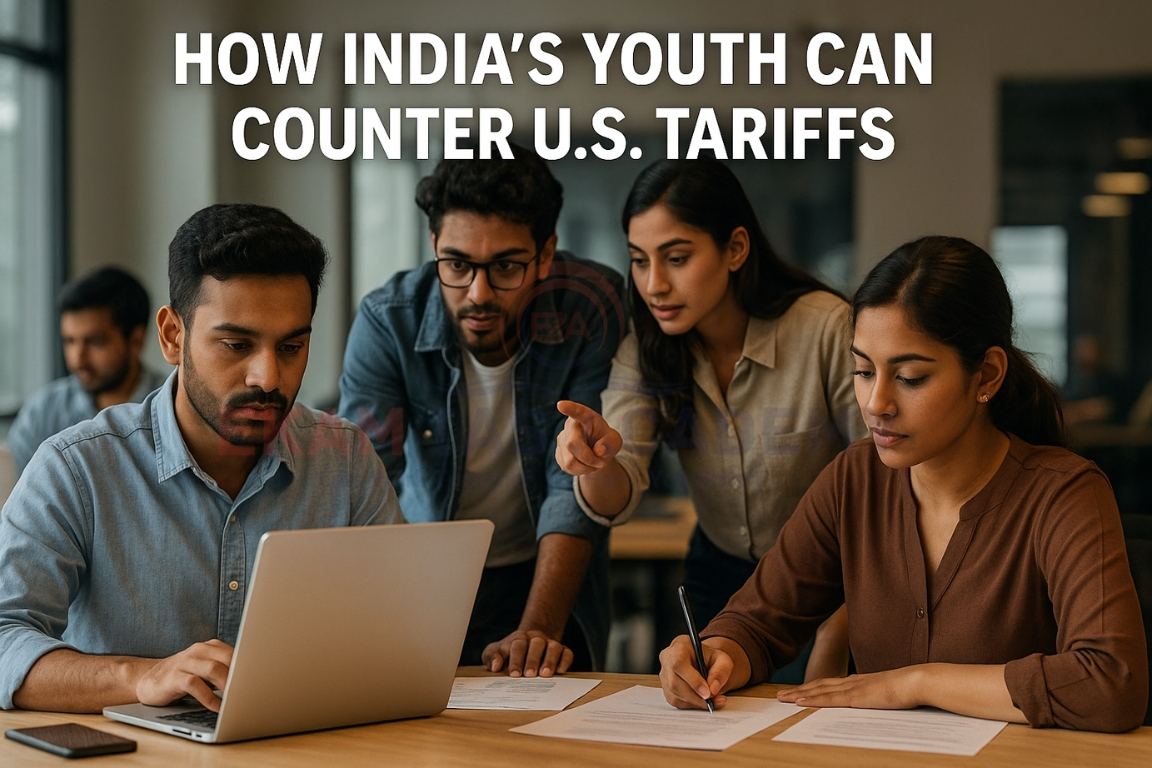The U.S. recently announced a 50% tariff on Indian goods, including a 25% penalty linked to India’s Russian oil imports. This move has raised concerns over India’s export competitiveness and economic stability.
What are Tariffs?
- Tariffs are taxes imposed on imported goods.
- For decades, U.S. tariffs averaged 2–3%, but since 2024, steep hikes have been introduced.
- With a 50% tariff, an Indian shirt worth $10 would cost $15 in the U.S., while cheaper alternatives from Vietnam or Bangladesh gain an advantage.
Impact on India
- Export Competitiveness: Tariffs make Indian goods costlier than rivals, especially in textiles, pharma, and IT services. Exports to the U.S. are crucial for foreign exchange and trade balance.
- Short-term Challenges: Risk of job losses in export-driven industries. Fall in incomes of workers and producers.
- Pressure on Agriculture: U.S. is demanding greater market access for its farm and dairy products, threatening Indian farmers.

China’s Edge and India’s Challenge
- China dominates global exports: 36% in textiles and 25% in electronics, while India’s shares remain below 5% in both.
- China’s lead comes from scale, infrastructure, and R&D investments, not just cheap labour.
- India risks being stuck as a low-wage economy unless it upgrades to high-value industries.
Shift in Global Demand
- Western markets are weakening due to ageing populations and inequality.
- Rising protectionism means countries like India must focus on their domestic demand.
- Economic growth now requires India to boost wages, build technology-led industries, and create a strong consumer base.
Role of Indian Youth
- Demographic Advantage: India is home to 20% of the world’s youth. Around 120 million Indians aged 15–29 are enrolled in schools/colleges — a population as large as Japan.
- Global Success Stories: Since the 1970s, Indian professionals have thrived in the U.S., contributing to its innovation and tech leadership. Indian immigrants (3.2 million in 2023) have high representation in STEM, entrepreneurship, and research.
- Strategic Leverage: Restricting Indian talent may hurt the U.S. itself. A skilled youth base can strengthen India’s domestic economy and reduce overdependence on exports.
Way Forward for India
- Invest in Education & Health to build a skilled workforce.
- Encourage R&D and innovation to move beyond low-cost production.
- Expand domestic demand by raising wages and creating better jobs.
- Strengthen trade strategy by diversifying markets and reducing reliance on the U.S.
Conclusion:
While U.S. tariffs pose short-term setbacks, India’s youth power, innovation, and domestic demand can provide a shield. Turning its large young population into a skilled, productive, and consuming class will be India’s best long-term defence against global trade turbulence.





